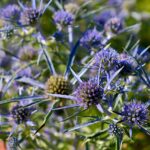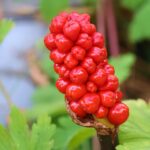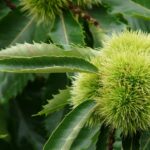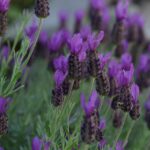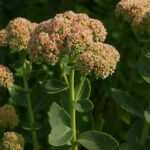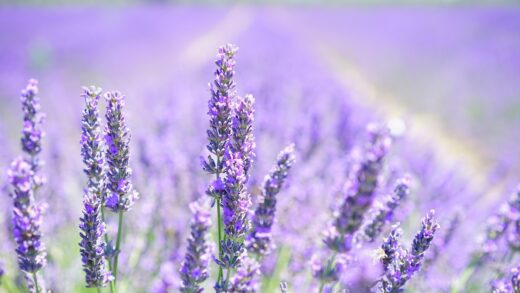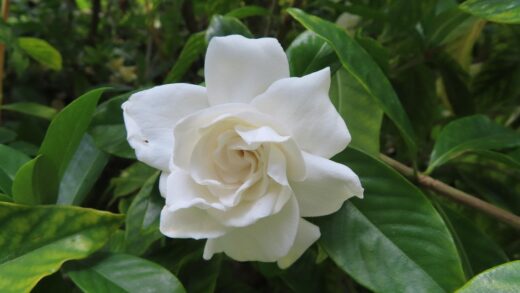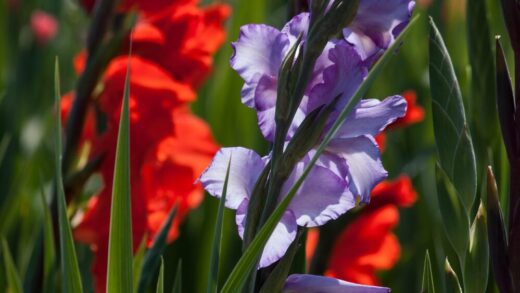The process of planting a new gardenia or propagating one from an existing plant is a deeply satisfying experience, laying the groundwork for future seasons of fragrant blooms. This endeavor begins long before the plant is placed in the soil; it starts with careful planning and preparation. Choosing the right time of year, selecting a suitable location with the specific microclimate gardenias crave, and meticulously preparing the soil are all critical steps that will dictate the long-term success of the plant. A well-planted gardenia will establish itself more quickly and prove far more resilient to environmental stresses. Similarly, understanding the techniques of propagation allows you to multiply your collection or share this beautiful plant with others, preserving the lineage of a particularly robust or beautiful specimen.
Planting a gardenia is not merely about digging a hole and inserting the plant; it is an act of creating the perfect home for a notoriously particular resident. The initial effort invested in preparing the planting site pays significant dividends down the road. This involves not only amending the soil to achieve the correct acidic pH and rich, well-draining texture but also considering its placement in relation to sun, shade, and wind. A properly situated plant will require less intervention later on, as it will be living in an environment that naturally meets most of its needs. This foresight is the hallmark of a skilled gardener.
Propagation, on the other hand, is a fascinating blend of science and patience. While there are several methods to create new gardenia plants, the most common and reliable technique for home gardeners is through stem cuttings. This method allows you to clone a parent plant, ensuring the new plant will have the exact same characteristics, from flower shape and fragrance to growth habit. It is a process that connects you more deeply with the lifecycle of the plant, observing the miraculous development of roots from a simple piece of stem. Success in propagation requires attention to detail, a sterile environment, and a dose of patience.
Whether you are planting a nursery-bought specimen or nurturing a newly rooted cutting, the aftercare is just as important as the initial act. The first few weeks and months are a critical period of establishment for the new plant. During this time, it is highly vulnerable to drying out and other stresses as its root system expands into the new soil. Providing consistent moisture, protecting it from harsh elements, and monitoring its progress closely will ensure it transitions smoothly into its new environment and grows into a strong, healthy shrub capable of producing the iconic blooms gardenias are celebrated for.
Selecting the ideal planting site
The long-term health and happiness of a gardenia are profoundly influenced by its location, making site selection a task of utmost importance. As plants with a preference for bright but indirect light, the ideal spot in a garden would be one that receives gentle morning sun and is shielded from the harsh, scorching rays of the afternoon. A location under the high canopy of deciduous trees can be perfect, as it provides a dappled light environment and protection. For indoor planting, an east-facing window is often the best choice, offering sufficient light to fuel growth without the risk of leaf burn.
More articles on this topic
Beyond the quality of light, the physical location must offer shelter and stability. Gardenias have a strong aversion to drafts and sudden temperature changes. When planting outdoors, choose a spot that is protected from strong, prevailing winds, which can quickly dry out the foliage and stress the plant. A location near a wall or a fence can provide an effective windbreak. Similarly, for indoor plants, it is crucial to place them away from heating and cooling vents, drafty windows, or doors that are frequently opened and closed. Maintaining a stable temperature environment is key to preventing bud drop.
The soil at the chosen site is a non-negotiable element of success. Before committing to a location, it is essential to test the soil’s pH. Gardenias demand acidic soil, ideally with a pH between 5.0 and 6.5. If the native soil is alkaline, you will need to amend it heavily with materials like sphagnum peat moss, compost, or sulfur to lower the pH. It is also vital that the soil is well-draining, as gardenias are susceptible to root rot in waterlogged conditions. If the soil is heavy clay, you must incorporate significant amounts of organic matter to improve its structure and drainage.
Finally, consider the mature size of the gardenia variety you are planting. While some are compact, others can grow into substantial shrubs several feet tall and wide. Ensure the chosen site provides adequate space for the plant to reach its full potential without being crowded by other plants. Good air circulation is essential for preventing fungal diseases, so avoid planting it in a tight, enclosed space. Planning for its future growth ensures the gardenia will not only fit its space but also have the resources it needs to thrive for many years.
The process of planting
The best time to plant gardenias is typically in the spring or autumn. These milder seasons allow the plant to establish its root system without the extreme stress of summer heat or winter cold. Planting in the spring gives the gardenia a full growing season to settle in before winter, while autumn planting in warmer climates allows the roots to grow during the cool, moist winter months. Avoid planting during the peak heat of summer, as this can be incredibly stressful for a new transplant and significantly increases the risk of failure.
More articles on this topic
Once you have selected the site and the appropriate time, the next step is to prepare the planting hole. The hole should be dug at least twice as wide as the plant’s root ball but no deeper. It is a common mistake to dig the hole too deep, which can cause the plant to settle over time, leading to poor drainage around the crown and potential rot. The width of the hole is important because it allows you to backfill with amended, acidic soil, giving the new roots a good, friable medium to expand into.
Before placing the plant in the hole, carefully remove it from its nursery container. Examine the root ball; if the roots are tightly wound or circling the bottom of the pot, a condition known as being root-bound, it is important to gently loosen them. You can use your fingers to tease the roots apart or make a few shallow vertical cuts with a clean knife. This encourages the roots to grow outwards into the new soil rather than continuing to circle in their original shape. This simple step is crucial for the long-term establishment of the plant.
After placing the plant in the hole, ensure that the top of the root ball is level with or slightly above the surrounding ground level. Backfill the hole with the prepared acidic soil mix, gently tamping it down to remove any large air pockets. Once the hole is filled, create a shallow basin of soil around the base of the plant to help hold water. Water the newly planted gardenia thoroughly, allowing the water to soak in deeply and settle the soil around the roots. Applying a layer of organic mulch, such as pine bark or pine needles, will help retain moisture, suppress weeds, and contribute to the soil’s acidity as it breaks down.
Propagation through stem cuttings
Propagating gardenias from stem cuttings is the most accessible and reliable method for the home gardener to create new plants. The ideal time to take cuttings is in the late spring or early summer, after the plant has finished its first flush of blooms and the new growth has started to mature slightly. You are looking for semi-hardwood cuttings, which are stems that are beginning to turn woody but are still flexible. This type of wood has the best balance of maturity and growth potential for successful rooting.
To take a cutting, select a healthy, vigorous stem and, using a sterile, sharp knife or pruning shears, cut a 4- to 6-inch section from the tip. The cut should be made just below a leaf node, which is the point on the stem where a leaf or branch emerges. Carefully remove the leaves from the bottom half of the cutting, leaving only two or three leaves at the top. If the remaining leaves are very large, you can cut them in half horizontally to reduce moisture loss through transpiration while the cutting is developing roots.
To increase the chances of successful rooting, it is highly recommended to dip the cut end of the stem into a rooting hormone powder or gel. This product contains auxins that stimulate root formation and can significantly speed up the process. Tap off any excess powder before planting the cutting. Prepare a small pot with a sterile, well-draining rooting medium, such as a mix of peat moss and perlite or sand. The medium should be pre-moistened so it is damp but not waterlogged.
Insert the hormone-treated end of the cutting about one to two inches deep into the rooting medium, gently firming the medium around it to hold it in place. To create a humid environment, which is essential for preventing the cutting from drying out, you can cover the pot with a clear plastic bag or the top of a plastic bottle. Place the cutting in a warm location with bright, indirect light. It is crucial to keep the rooting medium consistently moist during this period. Roots will typically begin to form within four to eight weeks.
Aftercare for new plants
The period immediately following planting or potting a new gardenia cutting is a critical phase where attentive care is essential for survival and establishment. For a newly planted gardenia in the garden, the primary focus is on water. The soil should be kept consistently moist to encourage the new roots to grow and expand into the surrounding soil. This may require checking the plant every day or two for the first few weeks, especially if the weather is warm or windy. A deep, thorough watering is much more effective than frequent, shallow sprinklings.
For newly propagated cuttings, maintaining high humidity is the most important task. The plastic covering or dome should remain in place to create a mini-greenhouse effect, trapping moisture around the leaves. You will need to air it out for a few minutes every day to prevent mold from forming and to refresh the air. Check the rooting medium regularly to ensure it stays moist. You can test for rooting by giving the cutting a very gentle tug; if you feel resistance, it is a sign that roots have begun to form. Once the cutting has a healthy root system, you can gradually acclimate it to lower humidity by removing the cover for longer periods each day.
Protecting new plants from environmental stress is also crucial. A newly planted gardenia is more susceptible to sun scorch and wind damage. You might consider providing temporary shade during the hottest part of the day for the first couple of weeks. For a newly rooted cutting that has been moved to its own pot, it should be kept in a protected area with indirect light as it continues to develop its root system and produce new top growth. Avoid placing it in direct sun or a drafty location until it is more mature.
Finally, be patient with fertilization. A newly planted gardenia does not need to be fertilized immediately; it is more important for it to focus its energy on root development. Wait at least a month or two, or until you see clear signs of new growth, before applying a light, balanced fertilizer for acid-loving plants. Similarly, a newly rooted cutting has all the nutrients it needs in the rooting medium for the first several weeks. Wait until it is well-established and has been potted up into a larger container with proper potting soil before beginning a regular feeding regimen.









